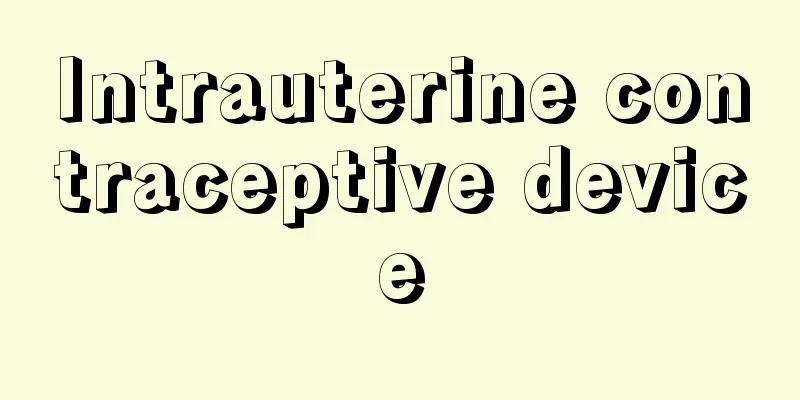Fracture - fracture

|
A fracture is an injury to a bone that has caused a partial or complete loss of connection to the bone due to an external force. Fractures are classified into various categories, the main ones being as follows: (1) Fractures are divided into subcutaneous and open fractures depending on whether or not the skin is damaged. Subcutaneous fractures are those without skin damage and are also called simple fractures. Open fractures are those in which the skin is damaged and the fractured part is exposed to the outside world and are also called compound fractures. (2) Depending on the severity of the fracture, it can be classified as a complete fracture, in which the bone connection is completely broken, or an incomplete fracture, in which the bone connection is only partially broken but partially maintained. (3) Depending on the external force applied to the bone, fractures can be classified as avulsion fractures, compression fractures, sliding fractures, torsion fractures, and comminuted fractures. (4) Depending on the shape of the fracture line, fractures can be classified as transverse, longitudinal, oblique, spiral, or compound fractures. Compound fractures are fractures in which the fracture lines run in different directions and are compounded. [Takashi Nagai] SymptomsSymptoms of shock and fat embolism may occur as systemic symptoms when a bone fracture occurs. Symptoms of shock include shallow breathing, increased pulse rate, weak pulse, and low blood pressure. Fat embolism occurs when fat from the bone marrow becomes clogged in the blood vessels of the brain or lungs, causing cerebral symptoms and difficulty breathing. The first local symptom is pain, which worsens with movement. There is also marked tenderness at the fracture site, known as Malgaigne fracture pain. Joseph François Malgaigne (1806-65) was a French surgeon. Swelling and subcutaneous bleeding are usually seen around the fracture site. This may be slight immediately after the injury, but becomes marked several hours or the next day. In a complete fracture, there is marked deformation due to displacement of the fractured ends, and abnormal mobility at the fracture site and a clicking sound due to the fractured ends touching each other can be heard. Movement is also impaired by the fracture, and this is particularly marked with a complete fracture. Complications of fractures include damage to the skin, blood vessels and nerves. Open fractures with skin damage are prone to infection, and infection makes healing more difficult. [Takashi Nagai] Healing processNormally, if a fracture is treated appropriately, a callus will form and eventually fuse and heal, but if the fracture is in poor condition, such as in the case of an elderly person with a fracture that is difficult to fuse or an open fracture that has become infected, or if the treatment method is not appropriate, the fracture may progress abnormally, resulting in delayed healing, malunion, or a false joint. The number of days required to heal a fracture varies depending on the fracture site, and is quicker in younger people, depends on the shape of the fracture line, and is delayed in open fractures. [Takashi Nagai] TreatmentWhen a patient is in shock, first emergency treatment is given to treat the shock, and then the fracture is immobilized with a splint or other emergency treatment, and the fracture itself is treated once the patient's overall condition improves. The treatment for the fracture itself is to allow the bone to heal and then restore the function of the affected limb. To achieve this, reduction, immobilization, and functional training are performed. [Takashi Nagai] ReductionReduction is performed conservatively, without open surgery whenever possible. Anesthesia is usually administered during reduction to eliminate pain and relax muscles. If conservative reduction is not possible or is insufficient, open surgery is performed to reduce the injury. In some cases, continuous traction therapy is used to attempt reduction. [Takashi Nagai] FixationFor fractures without displacement and those that have been reduced conservatively, immobilization such as splinting or plaster casts is used. When reduction is performed by open surgery, the bone is often fixed using metal splints, screws, marrow nails, etc. Even when such internal fixation is performed, plaster casts are often used. In the case of open fractures, traction therapy is also used for the purpose of immobilization. [Takashi Nagai] Functional trainingEven during the period when the bone is immobilized with a plaster cast or other bandage, efforts should be made to move the parts of the body that are not immobilized as much as possible to improve blood circulation and prevent muscle atrophy. The same should be done when a fixed or unloading brace is worn, and exercise training should be carried out to the extent possible while wearing the brace. Once the bones have healed and the immobilization is removed, functional training such as warm baths and active and passive exercise training should be carried out to restore joint mobility and muscle strength and regain normal function. [Takashi Nagai] [Reference] | |Source: Shogakukan Encyclopedia Nipponica About Encyclopedia Nipponica Information | Legend |
|
骨の外傷で、外力の作用により骨の連絡が一部または全部絶たれたものをいう。骨折はいろいろに分類されるが、そのおもなものを次にあげる。 (1)皮膚の損傷の有無によって皮下骨折と開放骨折に分けられる。皮下骨折は皮膚の損傷がないもので、単純骨折ともよばれる。開放骨折は皮膚が損傷して骨折部が外界と交通しているもので、複雑骨折ともいわれる。 (2)骨折の程度によって、骨の連絡が完全に絶たれた完全骨折と、骨の連絡が一部だけ絶たれたもので部分的に保たれている不完全骨折に分けられる。 (3)骨に加わった外力の働きによって、裂離骨折、撓曲(とうきょく)骨折、圧迫骨折、引違い骨折、捻転(ねんてん)骨折、粉砕骨折などに分けられる。 (4)骨折線の形によって、横(おう)骨折、縦(じゅう)骨折、斜骨折、螺旋(らせん)骨折、複合骨折に分けられる。複合骨折は、骨折線がいろいろな方向に走って複合しているものをいう。 [永井 隆] 症状骨折のときの全身症状としてショック症状や脂肪栓塞(せんそく)をおこすことがある。ショック症状としては、呼吸が浅く、脈拍数が増加するほか、脈拍微弱や血圧低下などがみられる。脂肪栓塞は、骨髄の脂肪が脳や肺の血管に詰まって脳症状や呼吸困難をきたすものをいう。 局所の症状としては、まず疼痛(とうつう)があり、動かすと痛みが強くなる。また骨折部に著明な圧痛があり、これをマルゲーヌ骨折痛という。マルゲーヌJoseph François Malgaigne(1806―65)はフランスの外科医である。骨折部を中心に腫脹(しゅちょう)と皮下出血がみられるのが普通である。これは受傷直後には軽度であっても、数時間後ないし翌日に著明となる。完全骨折では骨折端の転位のために著明な変形が認められ、骨折部に異常可動性や骨折端が触れ合うためにコツコツといった音が認められる。また骨折のために運動が障害され、完全骨折ではとくに著明に障害される。 骨折の合併症としては、皮膚の損傷のほかに血管や神経の損傷をきたすことがある。皮膚損傷のある開放骨折の場合は感染しやすく、感染すると治りにくくなる。 [永井 隆] 治癒経過骨折は普通、適当に治療すれば仮骨ができ、やがて癒合して治癒するが、老人の癒合しにくい骨折や開放骨折で感染した場合などのように骨折の状況が不良なとき、あるいは治療法が適当でなかったときなどには異常な経過をとり、遷延治癒、変形治癒、仮関節になることがある。骨折の治療に要する日数は、骨折部位によって異なるほか、年齢が若いほど早く、骨折線の形にも左右され、また開放骨折では遅れる。 [永井 隆] 治療患者がショック状態のときには、まず救急処置としてショックに対する治療を行い、骨折に対しては救急的に副子などで固定し、骨折そのものの治療は全身状態が良好となってから行う。骨折そのものに対する治療は、骨を元どおりに癒合させて、そのうえで骨折した患肢の機能を元どおりに回復させることにある。そのために整復と固定と機能訓練が行われる。 [永井 隆] 整復整復はできる限り観血的手術をしないで保存的に行う。整復の際には痛みを除き筋力を弛緩(しかん)させるために、麻酔するのが普通である。保存的に整復ができなかった場合や不十分な場合には、観血的手術を行って整復する。また、持続的に牽引(けんいん)療法を行い、整復を図ることもある。 [永井 隆] 固定転位のない骨折および保存的に整復ができたものに対しては副子固定、ギプス固定などの固定が行われる。観血的手術によって整復を行ったときは金属副子、ねじ、骨髄釘(てい)などを用いて骨を固定することが多い。このような内固定を行ったときも、ギプス固定を行うことが多い。開放骨折などの場合は、固定の目的で牽引療法も行われる。 [永井 隆] 機能訓練ギプス包帯などによる固定期間中も、固定されていない部分はできるだけ動かして血行をよくし、筋肉の萎縮(いしゅく)を防止することに努める。固定装具や免荷装具を装用した時も同様であり、また装具装用で可能な範囲の運動練習を行う。骨が癒合して固定を除去したら温浴、自動的・他動的運動練習などの機能訓練を行い、関節の可動性と筋力の回復を図り、正常な機能を取り戻すようにする。 [永井 隆] [参照項目] | |出典 小学館 日本大百科全書(ニッポニカ)日本大百科全書(ニッポニカ)について 情報 | 凡例 |
Recommend
Secession Architectural Society - Secession Architectural Society
A pioneering group in the modern architecture move...
Hippocampus kuda (English spelling) Hippocampuskuda
…[Isao Hanyu]. … *Some of the terminology that me...
Iki Iori - Lively
…In 1615 (Genwa 1), Terusumi was granted 38,000 k...
Artabanus II
…In 20 BC, a peace treaty was concluded between t...
Hippocampus
...A general term for marine fish in the genus Hi...
Cover - Cover
This refers to the slight photographic density th...
Taira no Norimori - Taira no Norimori
Year of death: Bunji 1.3.24 (1185.4.25) Year of bi...
Demon firewood white candy - Kishin Hakusan
...However, as seen in the proclamation of the ab...
Wodonga (English spelling)
A city on the Murray River in northeastern Victori...
Alecto - Alecto
...When they appeared on stage as choruses in the...
Agrias sardanapalus (English spelling)
…[Takakura Tadahiro]. … *Some of the terminology ...
Clethrionomys montanu (English spelling) Clethrionomysmontanu
…[Tadaaki Imaizumi] [Yoshinori Imaizumi]. … *Some...
Borges - Jorge Luis Borges
Argentine poet and writer. Born into a wealthy fa...
Yagi=Uda Antenna - Yagiuda Antenna
Also known as the Yagi antenna. A very short wave ...
One Heart, Five Worlds Jewel - One Heart, Five Worlds Jewel
...Although the name is the same, the Kabuki and ...









